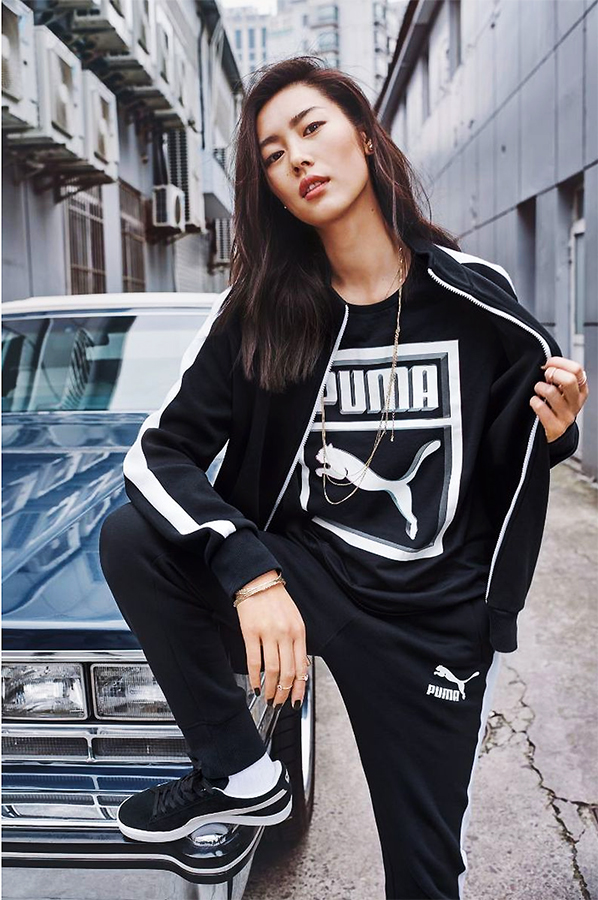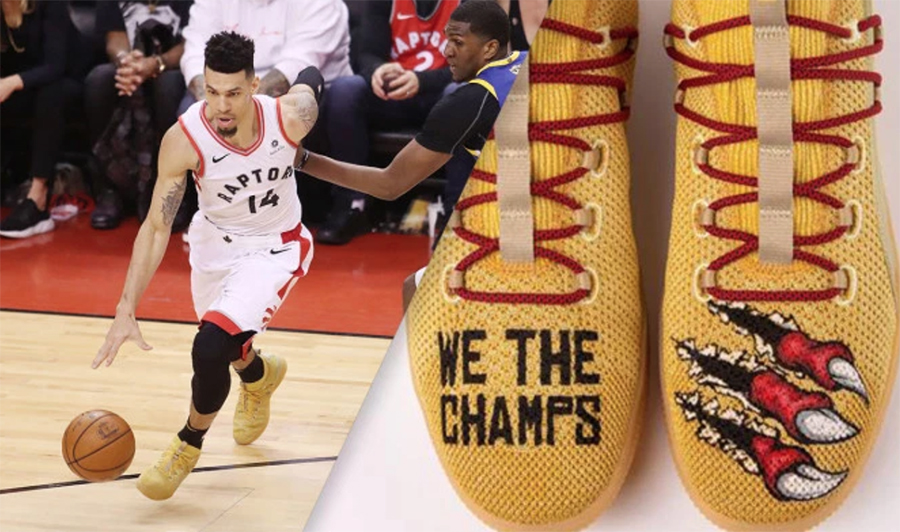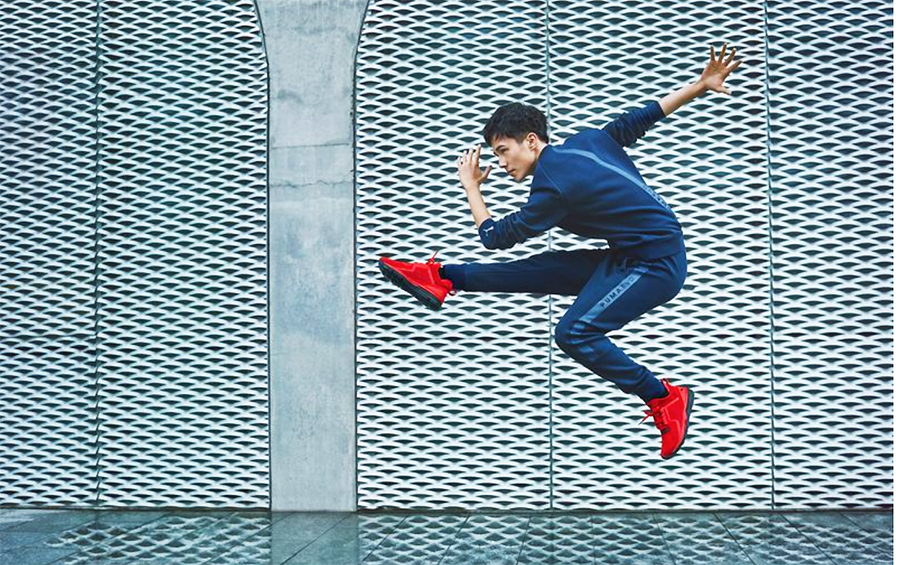 By Thomas J. Ryan
By Thomas J. Ryan
<span style="color: #999999;">Boosted by booming sales in China, accelerated growth in the U.S. and Europe, and broad-based growth across categories, Puma reported second-quarter results that topped analysts’ targets and lifted its guidance for the year.
The guidance was raised due to the Q2 outperformance and solid Q3 order book visibility.
“The second quarter of 2019 developed very positively for us,” said Bjørn Gulden, CEO of Puma, on a media call. “All divisions and all regions saw healthy improvement. New styles of footwear sold well, apparel continued to be strong, replenishment orders for both apparel and footwear developed well and our direct-to-consumer business also performed well.”
In the quarter ended June 30, sales increased 15.7 percent currency-adjusted to €1,227 million (up 16.9 percent on a reported basis), driven by robust growth across channels, geographies, and categories.
Growth accelerated on top of the 15.3 percent currency adjusted gain seen in the first quarter. Analysts, on average, had expected growth of 13.6 percent.
In the Americas region, sales grew 19.7 percent on a currency-adjusted basis (22.8 percent reported) to €462.8 million. Growth in the region accelerated from a 16.3 percent currency-neutral gain in the first quarter.
Puma told analysts the brand’s relaunch into basketball about 12 months ago is “helping tremendously” as Gulden remarked that “the 16-year-old kid is drawn to the Puma brand” for the first time in a long time. He told journalists that the basketball entry is helping drive sales of lifestyle models, and in particular retro styles, but performance shoes are also growing.
Gulden told analysts that Puma is securing more shelf space in the U.S. but “deserves a lot more.” To a lesser extent, Puma’s gains in the Americas region are being helped by a new management team in Brazil that has elevated business in the region over the last six months.
In the Asia/Pacific region, sales were up 21.6 percent on a currency-neutral basis (23.0 percent reported) to €314.8 million. The region had shown a 28.6 percent currency-neutral gain in Q1.
The driver of the gain was China, where sales grew more than 50 percent. Puma has opened around 200 stores in China so far this year while its two main retail franchise partners, YY Sports (Pou Chen) and Belle, have opened about 100 Puma stores each. Additionally, Puma has directly opened 33 net stores in China as well. At the end of June, Puma had a total of about 2,100 stores in China.
Further openings and infrastructure investments in China are planned with Gulden noting that the brand’s main competitors, Nike and Adidas, have 10,000 and 12,000 locations across China, respectively. Gulden told analysts that many of Puma’s stores in China are too small and larger locations are being sought, but he also noted that both the “size of the store as well as the quality of the location” are key.
 In the EMEA region, sales were up 8.4 percent currency-neutral (8.0 percent reported) to €449.2 million. Growth in the region accelerated from a 5.7 percent currency-neutral increase seen in the first quarter and further acceleration is expected in the second half. The UK remains a challenge, Puma officials told analysts, with other regions having regained momentum in recent years.
In the EMEA region, sales were up 8.4 percent currency-neutral (8.0 percent reported) to €449.2 million. Growth in the region accelerated from a 5.7 percent currency-neutral increase seen in the first quarter and further acceleration is expected in the second half. The UK remains a challenge, Puma officials told analysts, with other regions having regained momentum in recent years.
<span style="color: #999999;">By category, apparel and footwear showed strong growth in the second quarter, improving by 22.7 percent and 14.5 percent on a currency-neutral basis, respectively, while accessories grew moderately by 6.3 percent. Footwear sales were €590.1 million, apparel, €432.1 million and accessories, €204.6 million.
Puma said it experienced growth across the categories with sportstyle, motorsport and golf showing the highest growth rates.
Footwear sales accelerated versus the 9.3 percent growth seen in the first quarter. In Sportstyle, the RS-X franchise continues to be a bestseller within the “chunky shoe category,” supported by the launch of the RS-X Trophy at the beginning of the year as well as by collaborations with MTV and Motorola. The Cali and Cali Bold, supported by ambassador Selena Gomez, were also among Puma’s best-selling franchises in the first half of the year.
The overall gains were led by lifestyle with bulky silhouettes, white court shoes, lifestyle running and basketball all resonating with consumers. Puma is also seeing performance styles in soccer, basketball, golf and running-training doing better.
Edouard Aubin, at Morgan Stanley, said that unlike in the past, no specific silhouette is currently carrying the growth in both shoes and apparel. He said management indicated the brand is overall “healthier than a year ago” as it is selling on a wider scale.
Gross margins in the quarter improved 70 basis points to 49.3 percent in the quarter. Positive impacts from channel and product mix, lower discounts and positive currency impacts led to margin improvements.
Aubin, who has an “Equal-Weight” rating on the stock with a price target of €59.00, believes lower levels of discounting were likely the biggest driver of gross margin expansion in Q2. He wrote in a note, “The main reason for the lower levels of discounting was the fact that Puma products are selling better – geographic mix had a marginal impact on GM improvement in 2Q, unlike in 1Q, as sales in the US accelerated sequentially, while sales in Asia decelerated sequentially.”
Operating expenses (OPEX) rose 16.5 percent to €531.6 million in the quarter. The increase was mainly caused by higher sales-related variable costs, including logistics costs as well as higher marketing and retail investments.
Operating earnings jumped 39.4 percent to €80.3 million due to a strong sales growth combined with an improved gross profit margin and slight operating leverage.
Net earnings in the quarter jumped 59.8 percent to €49.7 million, or €0.33, exceeding analyst’s consensus of €0.26.
Inventory is well managed, up 19 percent versus the 17 percent sales gain.
On the media call, Gulden said the higher inventories reflect that Puma had brought in goods ahead of time as a defense against the possible U.S. tariffs on Chinese goods. He also said Puma is accelerating a shift of footwear and apparel production out of China and into countries like Vietnam, Bangladesh and Cambodia as a safeguard against any tariff impact. As other manufacturers do the same, the new supply hubs are driving up overall sourcing costs.
“You can’t move all production out of China, and therefore there will be a price increase in the market that will be visible for the consumer,” Gulden added.
He said about 25 percent of product sold in the U.S. now comes from China, down from more than 50 percent over five years ago. Puma had been moving production out of China over the years and accelerated these efforts amid the trade war.
<span style="color: #999999;">Puma also provided a number of brand highlights, including the signing of its largest deal ever as it teamed up with City Football Group, which includes reigning English Premier League champions Manchester City and a total of five teams on four continents. Manchester City’s 2019/20 kits were successfully launched in July and exceeded any first-day sales in the club’s history. Also in football, Puma signed Valencia and became the official match-ball partner of Spanish Football League “LaLiga.”
 Other highlights in sponsorships included:
Other highlights in sponsorships included:
- Puma’s first full NBA Basketball season after the company’s return to the sport last year saw the Toronto Raptors shooting guard Danny Green, shown right, become the first Puma athlete to win the NBA Championship since Isiah Thomas in 1990.
- At the FIFA Women’s World Cup in France, Puma sponsored quarter-finalist Italy and 78 individual
players. - In golf, Puma’s latest signing Gary Woodland won the US Open as his first major title.
- In motorsport, Puma entered into a long-term contract with Porsche to become the exclusive technical partner for racing gear as well as shoes, caps and luggage.
- In track & field, Puma is getting ready for the Olympic Games in Tokyo in 2020 by adding several new athletes to its roster, including world champion 400m hurdler Karsten Warholm.
On the operational side, Puma continued to invest in distribution and logistical network as well as in organizational processes. These include the stores opened in China. In August, Puma will open a New York flagship store on Fifth Avenue. At the beginning of the year, Puma started working on a new multichannel distribution center in Geiselwind, Germany. Construction is on track and the center is expected to be operational in early 2021. In addition, Puma North America announced the opening of a new distribution hub just outside of Indianapolis for 2020.
Looking ahead, Puma said currency-adjusted sales are now expected to increase by around 13 percent versus previous guidance calling for a gain of currency-adjusted increase of around 10 percent.
The gross profit margin is still anticipated to improve slightly against 48.4 percent in 2018 and operating expenses (OPEX) is still expected to expand at a slightly lower rate than sales. The operating result (EBIT) is now expected to come in between €410 million and €430 million, up from previous guidance between €395 million and €415 million. In line with the previous guidance, management expects that net earnings will improve significantly in 2019.
<span style="color: #999999;">At Cowen, analyst John Kernan viewed the revised outlook as conservative given global brand heat across multiple regions and categories. The analyst wrote in a note, “Momentum across EMEA, China, and the Americas is a positive read through to the athletic cycle but Puma is clearly becoming a more formidable competitor while mgmt. believes it is just scratching the surface in terms of door growth and space gains in N. America.”
Kernan noted that the 13 percent FY19 sales growth implies a deceleration in momentum for the second half to 11 percent growth from 16.8 percent in the first half. The top-end of Puma’s new EBIT range of €430 million also implies an easing in EBIT growth to 25 percent in the second half from 31 percent in the first half.
Kernan kept his “Market Perform” rating on the stock, but raised his price target to €68 from €57.
“The brand’s marketing and merchandise (various franchises) are resonating,” said Christopher Svezia at Wedbush in a note. “Apparel momentum should continue and notably Manchester City kits are off to a strong start (perhaps helping to improve UK performance which has been weak).”
He likewise said the guidance appears conservative and believes gross margins should benefit in the second half from quality inventory, brand demand and a favorable mix.
But Svezia wrote that his team continues to keep Puma’s rating at “Neutral” due to in part to the potential impact on not only sales but logistics expense should the U.K. exit the European Union by the October 31 deadline. He also said Puma’s shares are trading at a 21 percent premium to historic levels and noted that Puma will face particularly challenging comparisons in the fourth quarter. Q418 currency-neutral sales grew 20 percent. Wedbush’s price target increased to €60 from €59.
Wrote Svezia, “Puma has seen a successful comeback driven by improved merchandise, relevant marketing and product collaborations, and fashion trends supportive of the brand’s positioning. Puma is also currently a share gainer with material runway for sales growth and margin enhancement. Still, in order to become more constructive there likely needs to be a combination of more supportive valuation and increasingly improved fundamentals, such as an acceleration in North American growth, a possibility given the halo effect from the move back into basketball and collaboration with Jay Z, in our view.”
On Monday, Puma’s shares closed at €63.65, up €4.85, or 8.3 percent.
Photos courtesy Puma
















